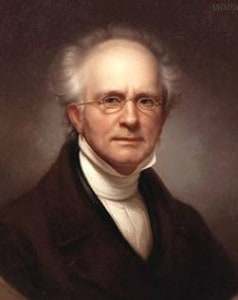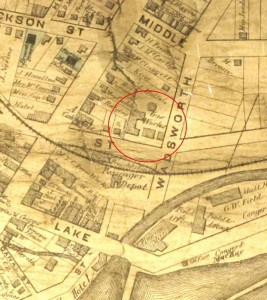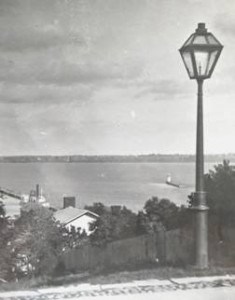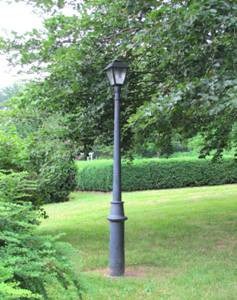Lighting the Scene
By Alice Akins, Site Manager of Rose Hill
Darkness has always challenged us. In the narrow crooked streets of early cities, people traveling after dark risked stumbling over obstacles, straying into noxious gutters, and encountering criminals. The earliest street lights were candles or oil lamps, often privately owned. In 1417, the Mayor of London called for lanterns “to be hanged out on the winter evenings.” The inhabitants of Paris in 1524 had to keep lights burning in all windows facing the streets. These measures kept cities dimly illuminated until the early 1800s.
 |
| William Murdoch |
William Murdoch was the first person to use gas for lighting. In the early 1790s, Murdoch experimented with various types of gas, finally settling on a gas derived from coal as the most effective. He lit his own Cornwall home in 1792 with coal gas. Six years later, he lit the main building of the engine works in Birmingham, and in 1802 he illuminated the outside of the building, to the amazement of the local people. German inventor Frederick Albert Winsor demonstrated the first public street lights in London in 1807.
 |
| Rembrandt Peale |
The new technology spread rapidly, including to the United States. Artist Rembrandt Peale illuminated a room in his Baltimore museum with great success in 1816. The novelty impressed patrons as a “ring beset with gems of light.” Peale even became one of the founders of the Gas Light Company of Baltimore– making his adopted city the first in the United States with gas streetlights. In 1823, the New York Gas Light Company served parts of Manhattanwith gas street lighting to supplement or replace 18th-century whale-oil lamps.
In 1848, the New York State legislature passed an act to allow the formation of gas light companies. Between 1848 and 1860, 74 such companies were formed. Locally Seneca Falls and Waterloo were illuminated in 1856, and Penn Yan in 1860.
 |
| The Geneva Gaslight Company on Wadsworth Street, 1872 |
The Geneva village meeting minutes tell us a little about the introduction of street lights here. In April 1852, the village board gave Stephen Merideth permission to lay “Gass pipes” through the streets of the village, “on condition that the same be not impaired, and that the Trustees have Supervision of the Same –.” Mr. Merideth must not have been able to follow through on the project, or at least not as quickly as the board wanted. In September of that year, the board stated that “the Resolution of Apr 13th 1852 granting to Stephen Merideth to privilege of laying Gass pipes through the Streets was rescinded – On Motion of W Crawford, permission was granted to Messrs Dungan Cartwright & Co [the firm that lit Ithaca] to lay Gass pipes through the Streets of the Village, on Condition that it be done within Eighteen months . . . ” By March 1853, the minutes say that Dungan Cartwright had formed the Geneva Gaslight Company “for the purpose of manufacturing and Supplying Gas for lighting the Streets and public and private buildings of the village of Geneva.” Located on Wadsworth Street, the company would provide Genevawith the necessary buildings, fixtures, and apparatus. The board confirmed that the new company “may lay conductors for conveying Gas through the Streets lanes alleys and Squares” of the town.
 |
| A gas light in Geneva |
The gas lighting phenomenon had some interesting consequences, both expected and unexpected. One of the biggest was that crime rates dropped in cities with better light. Gas lighting also meant longer work hours in factories, especially in the winter when days were short. Some factories in Britain ran the clock around. Production went up, although the workers may have found this a mixed blessing. By-products from the manufacture of coal-gas became important to the dye and chemical industries. Starting with mauve in 1856, a wide range of synthetic dye colors became available. Gas light quickly replaced candles in theater as it was cheaper and brighter, and did not drip wax on the actors. The better lighting encouraged audiences to pay more attention to the action on stage, and allowed theater owners to police crowd behavior. Actors could also wear less makeup and use more natural gestures.
Electricity began to replace coal gas for street lighting in 1875, when the Russian Pavel Yablochkov developed the arc light. The first electric street lights in the United States were for the Public Square road system in Cleveland, Ohio, in 1879. By the end of the century cheap, reliable, and bright incandescent bulbs had arrived and natural gas had also begun to replace coal gas in the United States. The changeover was nearly complete by the 1940s and 1950s, though there are still some cities that use coal gas street lighting in historic districts.
In Baltimorethe first street light in the United States still stands and casts its softer glow.
 |
| Gas light pole at Rose, now electrified. |
